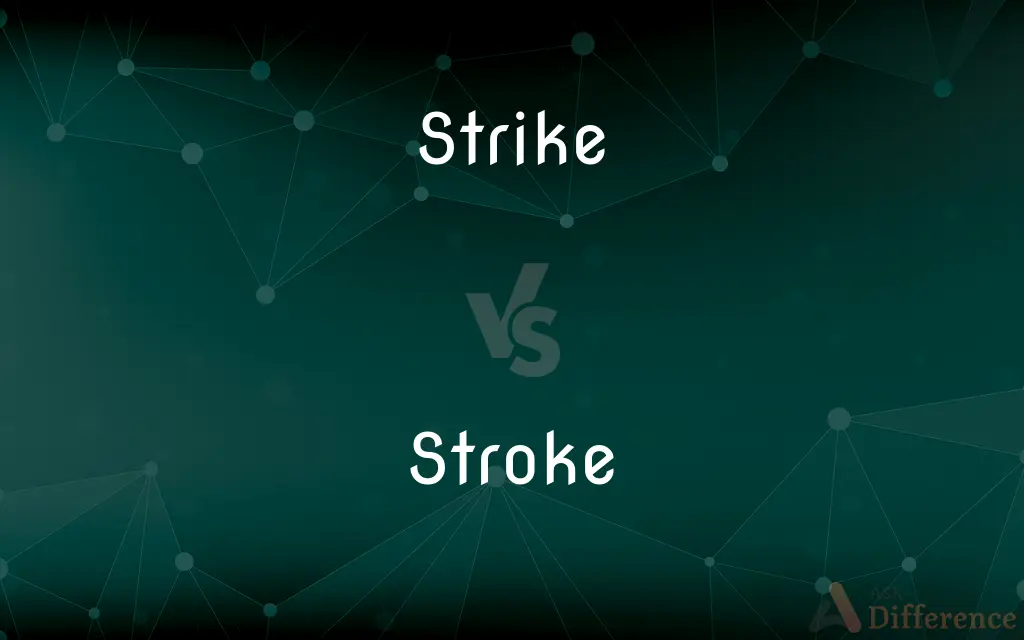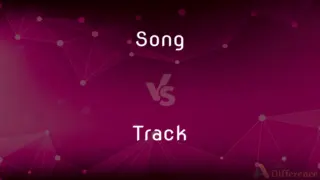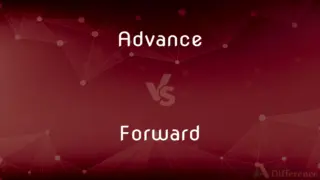Strike vs. Stroke — What's the Difference?
By Urooj Arif & Maham Liaqat — Updated on February 26, 2024
Strike refers to hitting or attacking something forcefully, often used in contexts of conflict or action. Stroke, however, implies a gentle, gliding touch or movement, frequently associated with care or creativity.

Difference Between Strike and Stroke
Table of Contents
ADVERTISEMENT
Key Differences
Strike encompasses actions where force is applied, often with the intent to impact or alter. It's a term broadly used across various contexts, from labor movements (as in a work stoppage) to the act of hitting in sports or combat. Stroke denotes a motion that is typically softer and more deliberate, suggesting finesse rather than force. In painting, a stroke is a single movement of the brush, contributing to the artwork's overall composition. In physical interaction, like petting an animal, it conveys gentleness and care.
Strike emphasis is on the deliberate exertion of power, whether physical or metaphorical, to achieve a specific outcome, such as striking a ball or striking for better work conditions. The term stroke also extends to medical contexts, where a stroke refers to a sudden disruption in the brain, indicating the breadth of its application beyond physical touch.
The contrast between strike and stroke is also reflected in their usage in language and metaphor. To "strike someone down" suggests aggression or defeat, while to "give a stroke of luck" implies a gentle bestowal of fortune. This dichotomy highlights the nuanced ways in which English incorporates physical actions into expressions of broader concepts and emotions.
Understanding the difference between strike and stroke can inform how actions are perceived or intended. In sports, the technique between a strike and a stroke can define the game's rules and strategies, as seen in baseball versus swimming. Similarly, in art, the distinction informs the approach to creating visual textures and effects, illustrating the specific qualities that each action can evoke.
Comparison Chart
Definition
To hit or attack with force.
A gentle, gliding touch or movement.
ADVERTISEMENT
Contexts
Combat, sports, labor movements.
Art, physical affection, medical conditions.
Connotation
Aggression, impact, conflict.
Gentleness, finesse, care.
Physical Action
Exertion of power, often resulting in impact.
Deliberate, soft motion without forceful impact.
Metaphorical Use
Indicative of conflict or striking for change.
Suggesting care, luck, or a singular action in art.
Compare with Definitions
Strike
Affecting suddenly, as in an affliction.
Disaster struck the town unexpectedly.
Stroke
A single action of a pen or brush.
The artist added a few final strokes to the painting.
Strike
In sports, a successful hit or action.
She struck the ball perfectly, scoring a goal.
Stroke
A gentle touch or caress.
She gave the cat a gentle stroke along its back.
Strike
A work stoppage as a form of protest.
The workers went on strike for better wages.
Stroke
A sudden medical condition affecting the brain.
He suffered a stroke that affected his mobility.
Strike
To ignite or light up.
He struck a match to light the campfire.
Stroke
Used to describe a moment of luck or genius.
It was a stroke of luck that led them to find the lost key.
Strike
To hit forcefully.
The boxer struck his opponent with precision.
Stroke
A movement in swimming or rowing.
His stroke in the water was smooth and efficient.
Strike
To affect by a sudden impression or impulse.
The proposed plan strikes me favourably.
May the Lord strike down those sinners!
I was struck dumb with astonishment.
Stroke
A gentle, caressing touch or movement upon something; a stroking.
Strike
A blow or application of physical force against something.
Stroke
A light touch
Strike
Indicate (a certain time) by striking;
The clock struck midnight
Just when I entered, the clock struck
Stroke
Touch lightly and with affection, with brushing motions;
He stroked his long beard
Strike
Stop work in order to press demands;
The auto workers are striking for higher wages
The employees walked out when their demand for better benefits was not met
Stroke
Strike a ball with a smooth blow
Strike
Pierce with force;
The bullet struck her thigh
The icy wind struck through our coats
Stroke
Treat gingerly or carefully;
You have to stroke the boss
Strike
Arrive at after reckoning, deliberating, and weighing;
Strike a balance
Strike a bargain
Common Curiosities
Is a stroke always a physical touch?
While often associated with physical touch, "stroke" can also describe non-physical actions, such as a stroke of genius, where it metaphorically suggests a singular, impactful action or idea.
Can the term "stroke" apply to both positive and negative contexts?
Yes, "stroke" can describe positive actions like a brush stroke in painting or a stroke of luck, as well as negative events like a medical stroke.
How do the terms "strike" and "stroke" reflect the intention behind an action?
"Strike" implies an intention to affect or alter through force or impact, while "stroke" suggests an intention to soothe, create, or act with deliberation and care.
What distinguishes a strike from a stroke in sports?
In sports, a strike typically involves hitting a ball or opponent with force, while a stroke may refer to a specific movement technique, such as in swimming or golf, emphasizing skill and precision over force.
Can both "strike" and "stroke" be used metaphorically?
Yes, both can be used metaphorically to describe actions and events beyond their literal physical meanings, enriching language with expressions that convey broader ideas and emotions.
Can "strike" and "stroke" intersect in their meanings or uses?
While "strike" and "stroke" primarily convey distinct concepts, their meanings can intersect in contexts where force and finesse are both present. For example, in certain sports like golf or billiards, the action might be described as a "stroke" for its precision and technique, yet it involves "striking" the ball.
How do cultural perceptions influence the understanding of "strike" and "stroke"?
Cultural perceptions can significantly influence how actions associated with "strike" and "stroke" are understood and valued. For instance, the emphasis on force and action in some cultures might celebrate the concept of "strike" in sports and social movements, while others might place higher value on the finesse and care implied by "stroke," especially in arts and personal interactions.
How does the concept of a strike manifest in different fields?
Beyond physical action, a strike can signify protest (labor strike) or a precise action (striking a match), showing its versatility in describing acts of impact or change across various scenarios.
What role does context play in differentiating between "strike" and "stroke"?
Context is crucial for differentiating between "strike" and "stroke," as it informs the intended meaning—whether it's an act of force or gentleness, a physical action or a metaphorical expression. Understanding the surrounding circumstances or the field of discussion (e.g., sports, art, medical) helps clarify the specific use of each term.
How does one's choice between "strike" and "stroke" affect communication?
Choosing between "strike" and "stroke" can significantly affect the tone, implication, and clarity of communication, underscoring the importance of selecting words that accurately convey intended actions and emotions.
In what ways do "strike" and "stroke" contribute to language richness and variety?
"Strike" and "stroke" contribute to the richness and variety of language by providing nuanced ways to describe actions and intentions. Their metaphorical uses, in particular, enrich storytelling and descriptive language, allowing for expressive and vivid conveyance of ideas, emotions, and actions.
How can understanding the nuances between "strike" and "stroke" benefit learners of English?
For learners of English, understanding the nuances between "strike" and "stroke" can enhance comprehension and expression, enabling more precise and appropriate use of language in various contexts.
Share Your Discovery

Previous Comparison
Song vs. Track
Next Comparison
Advance vs. ForwardAuthor Spotlight
Written by
Urooj ArifUrooj is a skilled content writer at Ask Difference, known for her exceptional ability to simplify complex topics into engaging and informative content. With a passion for research and a flair for clear, concise writing, she consistently delivers articles that resonate with our diverse audience.
Co-written by
Maham Liaqat













































